Chapel 6
This dome is made of 39 pentagonal antiprisms joined mainly with triangular prisms, of which there are 28. Also, there are 12 tetrahedra, and three pentagonal gyrobicupolas (which could as well be orthobicupolas), not counting the structure at the summit. The dome rests on six columns, each one of them crowned with a triangular cupola.
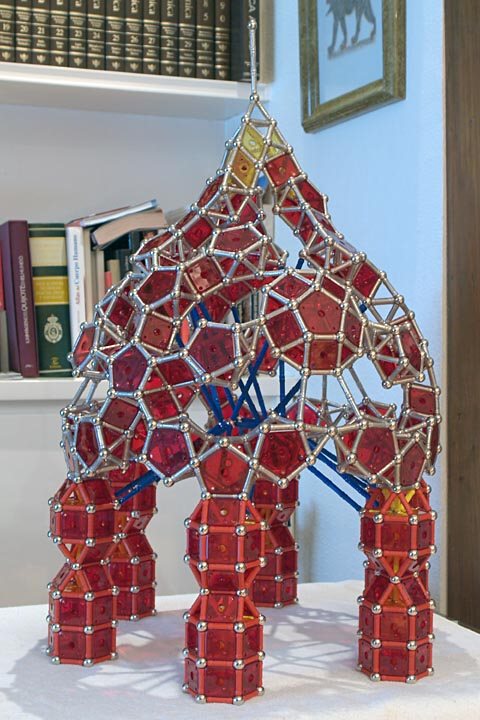
Chapel 6, side view
2948 pieces: 668 balls, 1776 rods, 84 pentagons, 321 squares, 99 rhombuses (15.07 kg)
|
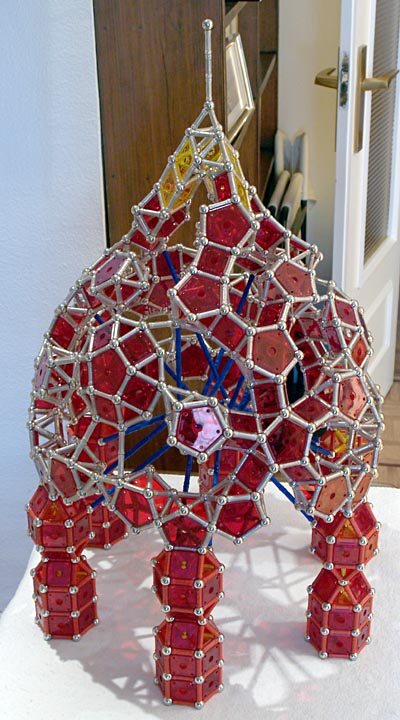
Chapel 6, top oblique view
|
A pentagonal antiprism is attached over the upper triangle of each column. Another two pentagonal antiprisms are attached to both sides of the first one. This structure is clearly shown in the nearest column in each of the previous pictures.
The columns are joined together in two different ways. Three joints are made with another pentagonal antiprism attached to the outer ones on top of the colums by two triangular prisms (see the following, left-hand picture). The other three joints are made with two regular tetrahedra attached to the outer antiprisms by their base, and one another by the remaining vertex (see the following, right-hand picture).
The pentagonal antiprisms in the joints of the first type are attached to another three antiprisms in the three possible remaining positions, again by means of triangular prisms. These sorts of pentagonal stars must be built first.
The pentagonal gyrobicupolas are built independently and then placed above the joints of the second type, attached to the antiprisms at both sides (belonging to the «stars») through tetrahedra, and resting on the antiprisms below through two pairs of rods. These structures can rotate around the axis formed by the vertices of the tetrahedra, and their final position will be fixed later.
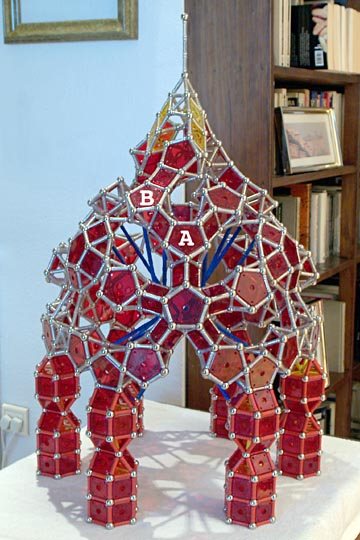
Chapel 6, first joint type
|
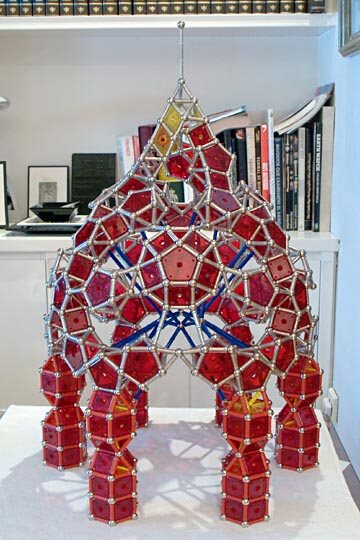
Chapel 6, second joint type
|
The position of the columns could be fixed by means of segments of five rods joining the inner vertices of the hexagonal bases. Although all six columns are in this way evenly placed in a circle, their orientations have to be somewhat different. Each column must rotate slightly outwards the joints of the first type, or, in other words, inwards the joints of the second type:
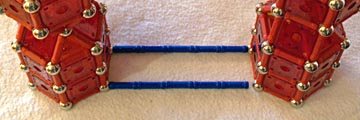
Chapel 6, first joint type, column orientation
|
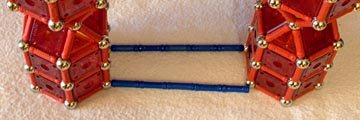
Chapel 6, second joint type, column orientation
|
This dome requires of inner scaffolding which, in this case, cannot be removed once the construction is finished. The following left-hand picture shows its first stage: segments made of six rods are attached to the inner vertices of the hexagonal cupolas crowning the columns, and join above in six balls forming a hexagon. The uneven orientation of the columns, just mentioned, causes the vertices of this hexagon to be at two different levels. So, the hexagon has all six edges equal, but it is not planar.
The following right-hand picture shows seven-rod segments attached to the lower level vertices of the hexagon, and used to support the pentagonal antiprisms labelled A. These antiprisms are the topmost ones in the «stars» formed in the first type of joint, and they were already labelled in this picture above.
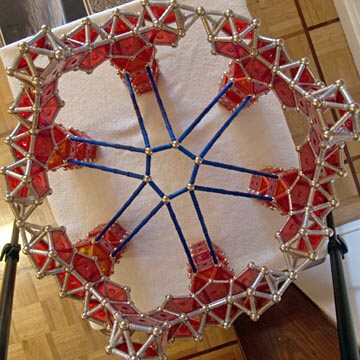
Chapel 6, scaffolding base
|
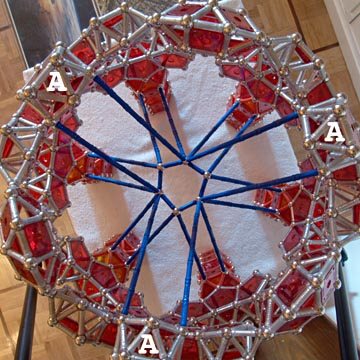
Chapel 6, support for antiprisms A
|
Another two pentagonal antiprisms are attached to each of the antiprisms A, again by means of triangular prisms. Both upwards and inwards, one to the left, labelled B, the other to the right. Both are also attached through one rod to their adjacent gyrobicupola, which so is fixed. A new pair of triangular prism and pentagonal antiprism is attached to each antiprism B; these will be the base for the summit structure.
Each antiprism B is supported by an eight-rod segment which rests on an upper vertex of the hexagon central to the scaffolding, as is shown in the left-hand picture. The right-hand picture shows the topmost antiprisms in place, ready for the structure forming the summit.
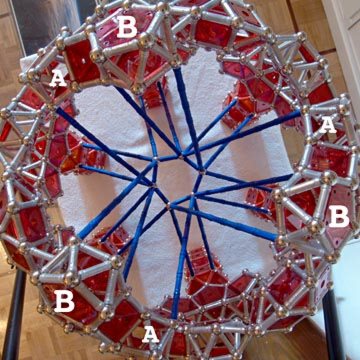
Chapel 6, support for antiprisms B
|
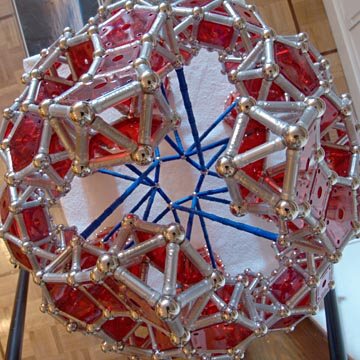
Chapel 6, base for the summit
|
Finally, an inside view of the finished dome:
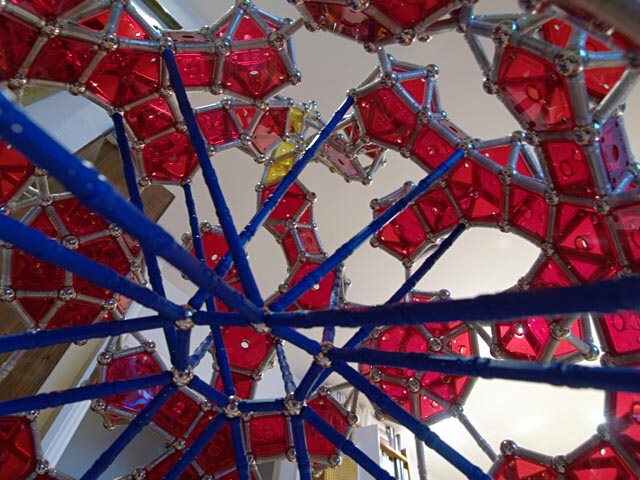
Chapel 6, inside view
|